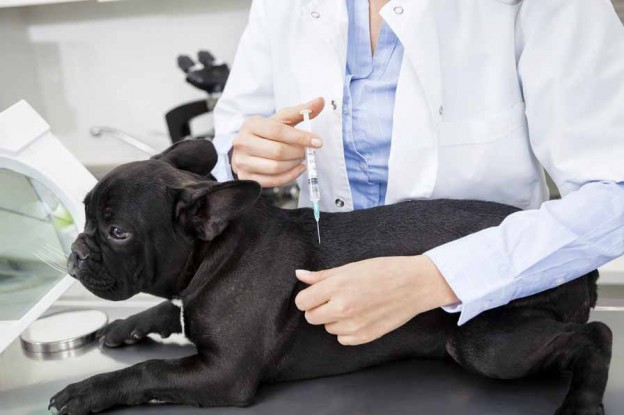
Kylie Baracz discovers the latest in pet medical treatment – from recent breakthroughs to the equipment saving lives.
Compared to the human medical field, veterinary medicine is either struggling behind or way out in front when it comes to its ongoing development.
According to Dr David Neck, spokesperson of the Australian Veterinary Association (AVA), the veterinary field lags behind in many technological developments, and this is mainly based around the cost of equipment.
“Advanced imaging such as PET scans are simply beyond the budget of veterinary medicine, even at referral university institutions,” he says.
Although new technology is not easy for vets to get their hands on, in some cases, veterinary medicine is out in front, as there are different constraints to work under. Dr Neck explains.
“I don’t have to worry about what a drug might do to a patient in 20 years’ time, simply because they don’t live that long. We find therefore that many drugs make it to the general veterinary market well before they become available for general human use.
“Where I think we are becoming more comparable to the human medical field is that veterinary medicine is becoming increasingly evidence-based in the last five to 10 years. By evidence-based, I’m referring to peer-reviewed literature, meta-analyses of published data, and reliable unbiased controlled clinical trials. Previously, we had a lot of anecdotal data to work with and we are moving well away from that level of evidence as a profession.”
Significant advances
Although veterinary medicine may be catching up, affordable technology is now becoming more prevalent in veterinary surgeries across the country. This includes medical imaging such as CT scans and ultrasound machines, and MRI in some centres.
“We have made significant advances in chemotherapy of cancer and minimally invasive surgery (laparoscopy, thoracoscopy). However, I think the greatest advance for our patient wellbeing has been a greater understanding of pain and the prevention of pain. Anaesthesia has become safer, our patients are more comfortable, and we have some terrific drug combinations to combat both chronic and acute pain,” says Dr Neck.
What needs to be improved?
Although there have been significant advancements, Dr Neck says there are always areas vets are working to improve, with osteoarthritis treatment being a main one.
“Dogs happen to be great models for human arthritis, and human pharmaceutical companies are very keen to develop treatments for chronic conditions such as arthritis,” Dr Neck says.
“There is little money to be made from short-term cures for a disease, but there are great rewards for long-term control of symptoms, as with arthritis. Therefore, it is very attractive to pharmaceutical companies to work with conditions such as dog arthritis as there can be lucrative spin-offs if the same drugs are useful in humans.”
Dr Neck says cancer treatment has also come a long way, but there are ethical challenges in putting pets through potentially debilitating treatments in order to extend life or cure cancer.
“[Animals] cannot give us their permission to ‘make them sick in order to fight the disease’, so we really don’t think it is ethically fair to make them feel sick from the side-effects of chemotherapy in order to buy them a small chance of beating the disease. Most chemotherapy is therefore designed to give us a limited extension of life, but avoid side-effects wherever possible.
“Recently, we have been working with metronomic chemotherapy which involves small doses at regular intervals, designed to retard the process of the cancer without necessarily beating it.”
Stem cell work is in its infancy, without much published data to clearly support it; however, some vets have taken to it very enthusiastically and are claiming good results. Not much of this success has been published yet in peer-reviewed literature, but Dr Neck says the next few years are yet to decide where we will head with this therapy.
Human “guinea pigs”
It seems the roles have reversed when it comes to dogs taking advantage of human medication. Dr Neck says it is not uncommon for vets to write prescriptions for dogs to take drugs created for humans.
“There is a long and complicated process to register a medicine for use in animals, and it is not inexpensive either,” says Dr Neck. “Therefore, many drugs never get registered or produced for use in animals and therefore we need to use the human versions when we need the benefits of the drugs. My hospital even stocks Viagra for treating pulmonary hypertension! There has been a real growth in the business of compounding pharmacies, so we can often get the human drugs conveniently made up into flavoured pastes for our pets.”
Advances in technology
Dr Neck says there have been huge advances in veterinary medicine, which includes pain relief, anaesthetic equipment and anaesthetic monitoring devices.
“The advances in critical care are great too. Electronic infusion pumps for delivering intravenous fluids were luxury items 15 years ago, but are now par for the course these days.
“The big ticket items remain out of our reach (such as barometric chambers, dialysis machines, radiation treatment) but the technology of smaller things (endoscopy, digital radiology, ultrasound machines) has come down a lot in price and are becoming part of the treatment for many pets now, not just the fortunate few.”







